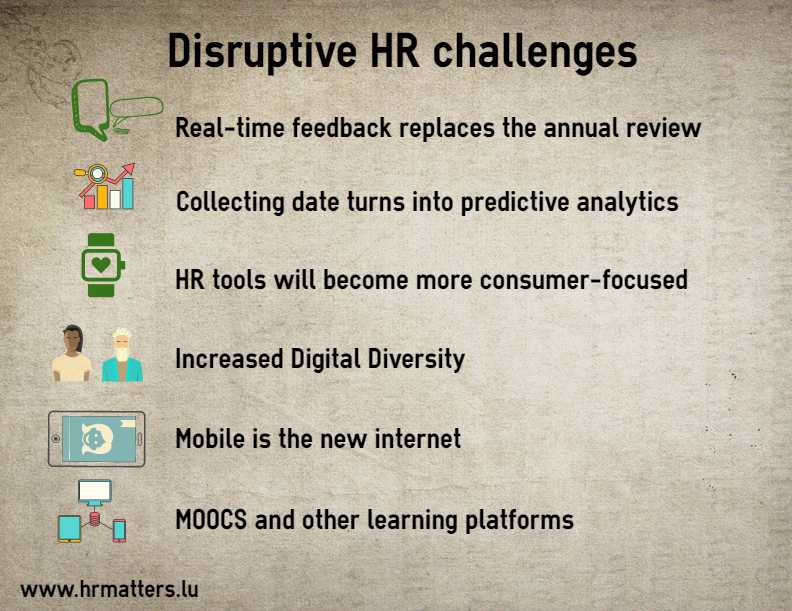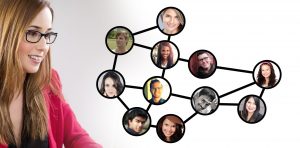Companies have to source, hire, on-board, pay, train, manage, reward, retain and lead their employees day by day. Also, there will always be some kind of function fulfilling such kind of activities (even if some of these activities were brought to the line), whatever this function is called nowadays. However, the way these activities are performed will and has already changed in the last years and that is where disruption comes into play.
According to a study led by www.cbinsights.com, 2.4 Billion Dollars were invested in HR start-ups in 2015 versus only 305 Million Dollars in 2011.
What does this figure show to us; HR professionals?
We see a significant increase within the HR tech market. A lot of new players try to find their niche and hope to become the next big (HR)-thing.
Most of these investments went into new platform and / or cloud-based Human Resources Management Systems (HRMS).
HR managers need to keep an eye on these developments in order to keep up with the time.
While having a closer look at where disruption plays or could play a role in HRMS, one can observe the following developments:

Real-time feedback replaces the annual review
A lot of companies have started to change their annual performance reviews into up- and downward real-time feedbacks linked to several short- or midterm projects in order to assess the performance on a more frequent basis. As targets can change very quickly during a year, this approach turns the reviews into more forward-looking feedbacks. At Uber, the HR team develops training based on the performance of their best employees in order to replicate these successful characteristics. Some of these new tools allow companies to respond more quickly to employee’s requests, training needs and suggestions.
Collecting date turns into predictive analytics
Some companies still struggle in getting all employees’ data into HRMS, some have the data but don’t know how to use it, whereas some are already using it to make a cognitive and behavioural diagnosis of candidates and employees in order to identify best-fit candidates and employees. Some tools allow integrating all real-time collected data into HRMS in order to ensure that candidates (and employees) get the right on-boarding package, tailor-made learning materials and matching career opportunities. These tools help in increasing the productivity, reducing turnover and recruiting the best fitting employees.
 HR tools will become more consumer-focused
HR tools will become more consumer-focused
One of the most important factors in HR tools today is the usability question. How easy is it to use by the employee, candidate and managers? The degree of engagement to use such tools corresponds to the degree of usability. If it makes their life (work) easier, the implementation will be a success. If not, then it will be a failure as from day 1.
Internal HRMS need to be self explanatory, so that people can easily find, choose and register to training courses, create an internal (global) network, update their status, have access to their package, follow up on candidates and set or monitor targets.
Increased Digital Diversity
The more digital the world, the more digital our life and working styles. Beside “digital natives” (Generation Y) who are very keen to every digital tool, companies also need to deal with older generations who are more reluctant when it comes to any kind of technical adaptation, especially to the use of digital tools. Instead of forcing all employees to use the same tools in order to create some sort of digital mono-culture, the companies should also create tools for those who prefer to work off-line. This digital diversity will be helpful in understanding the internal transformation process and help in reflecting the digital disruption process from different point of views.
Mobile is the new internet
There are more people having a smart phone than people having a PC or laptop. So, even if, nowadays in Europe, it’s likely that your employees have a PC or laptop, it’s more likely that they would be using your HR tool via their smart phones than via their PC. In other words, if you intend implementing a new (HR) software being used by your employees, also consider how it could be used via mobile devices. Furthermore, you should design new (HR) tools the way apps are designed: interactive, having single slide functions, fast and usable within one or two clicks / swipes.

Project-driven team setup
Recent developments show that there is a development from strict hierarchical systems towards more project-driven teams with an empowerment of the team. Depending on the projects and the knowledge of the team members, some members will naturally take over the leadership while others will be “normal” team members. In this fast-moving society, flexible organisational structures will become key to keep up with the pace of technological and people’s developments. Furthermore, the prospect employees from the next generation (generation Y) are used to work in teams to create their own networks and demand for a flexible organisational set-up.
MOOCS and other learning platforms
Today, most of the talent and performance management tools and Learning management systems (LMS) are still two separately used tools. In the near future, both systems will merge into one tool, giving recommendations on which training to choose depending on the last “real-time” feed-backs, the current knowledge and the selected career path. MOOCs (Massive Open Online Courses) will be integrated into such learning platforms as a new source of learning. Employees working in different countries will participate at the same training and acquire the same knowledge. Generally, MOOCs have some sort of time-line, are structured by a weekly curriculum and close with an assessment. Crowd-sourcing will also play a bigger role in the future as employees will pick trainings which have received the best feed-backs from other employees having been in a similar position.
How can HRM act as leader when it comes to disruptive changes?
HRM needs to truly understand the business needs and the business itself. HR employees need to know what drives the business, what factors change the business and what the main challenges are.
HRM has to think in assets. What are the core assets? Data, in depth business and HR knowledge, power to innovate, lasting change management, strong networks, engagement and health etc. While concentrating on the core assets, HRM can better meet the needs of the company.
HRM should be close to IT and understand how IT and tools can contribute to an added-value work-life.
HRM needs to be re-branded. Employees and the management should recognise HRM as one of the leaders when it comes to digital transformation and disruptive work models. Therefore, a skill-shift in HRM is inevitable. HR staff needs a technical affinity, show the willingness to first change their habits and way of working (before adapting those of other departments) and in depth understanding of data and statistics as well as the ability to interpret and translate business needs into added-value processes.
Conclusion: The HR (MS) environment is in the throes of technological changes, triggered by the trend towards more available data, an increased mobile awareness and rising expectations from employees as well as candidates. HRM needs to quickly adapt the technologies and train its (HR) employees in order to meet the needs of the (internal and external) clients. Disruption within HRM is not, as such, creating business benefits, but it certainly triggers companies into the right direction. I believe that companies providing the most employee-focused tools will be the one staying ahead of the game.
What are your experiences in terms of disruption within HRM?
